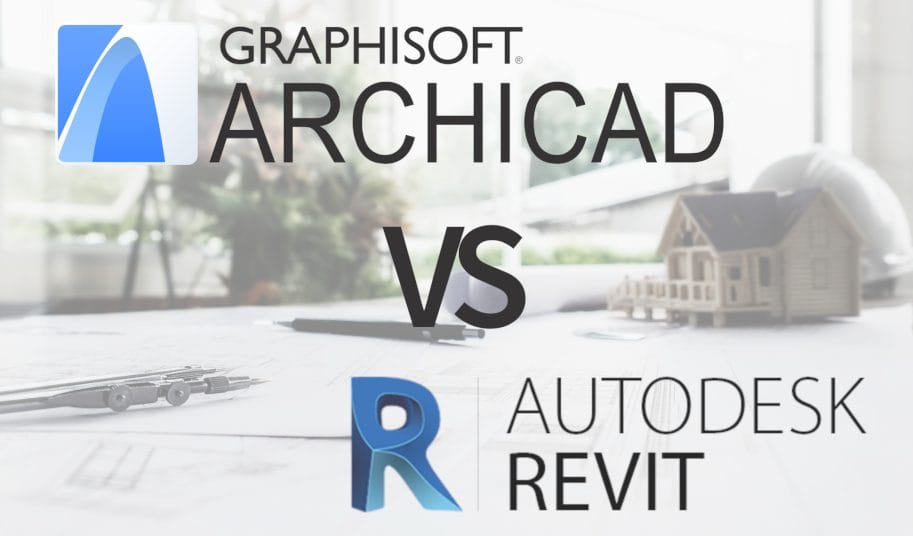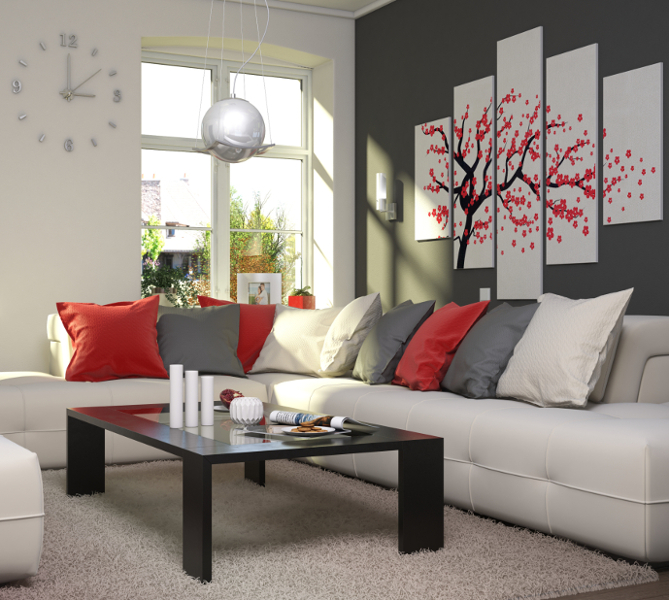Although many think Building Information Modelling (BIM) is just another CAD program, it actually goes well beyond that. So what is BIM? BIM is intelligent model-based process that provides an insight to help you plan, design, construct and manage buildings and infrastructure. BIM creates more than just digital 2D or 3D models; BIM models use objects that have intelligence, geometry and data.
Building Information Modelling – BIM is one of the most popular topics in construction. We can define it as a process helping us to manage complexity and improve performance in construction projects. Simplified, BIM is a process for creating and managing all of the information on any project – before, during and after construction.
ArchiCAD vs Revit

Revit by Autodesk and ArchiCAD by Graphisoft are the two biggest players in the market. This comparison between ArchiCAD and Revit will help architects, owners and contractors to make а more briefed decision.
ArchiCAD is the first BIM software for architects, created in 1984. Offering a suite of tools for building design and engineering, this software enables seeing the project through engineering and visual design of building`s interiors and exteriors. On the other hand, Revit is 4D BIM-capable tool which helps us to plan all aspects of a building project, from design to construction and beyond. Realized in 2002, this software can be used by architects, builders, engineers, project managers and more.
Which BIM software is better? Is it ArchiCAD or is it Revit? They are both advanced and sophisticated BIM software applications. Each with their own metrics. Let`s go through some comparison items
Revit`s advantages and disadvantages
It is a BIM software which allows architects and engineers to design a building and its components in 3D, annotate the model with 2D drafting elements and access building information from the model database. Revit is 4D BIM-capable with tools to plan and track various stages in the building`s lifecycle, from concept to construction and demolition.
Revit Advantages are: huge demand in the market, strong development platform, widely supported by courses and tutorials, greater coordination and collaboration. It is meant for architecture, but also for structure and MEP.
Revit Disadvantages are: it does not run on OSX, only partially multi-threaded (so it needs the fastest CPU), file size and scalability issues.
ArchiCAD`s advantages and disadvantages
It is a 3D Modelling and CAD application which allows you to draw, model and display building designs simply and quickly. ArchiCAD is object-oriented, which means that it will enable you to generate and modify three-dimensional objects and produce 2D architectural drawings and 3D models of buildings.
ArchiCAD Advantages are: almost fully multi-threaded, runs also on OSX, has a friendlier user interface and is oriented towards architects. It has a very well developed support for IFC, good drafting, layout approach and decent rendering. Also it has very flexible and efficient parametric objects (GDL objects don`t affect file size).
ArchiCAD Disadvantages are: custom objects require GDL scripting, many old workarounds are never fully solved, some extensions are never properly updated and less-used API.
FEATURES
User Interface
ArchiCAD`s user interface is maybe the first thing that users are praising it for. It`s clean and sleek and that`s maybe the reason why ArchiCAD has an easier learning curve, especially for designers. While the user interface can be customized in a number of ways, it has slightly less flexibility than its opponent. Revit features a user interface that is highly customizable, supporting multiple approaches for using the software. It is a little bit complicated, because of its medium learning curve. However, Revit offers greater level of flexibility to designers and architects.
Conceptual Design
Concept design in ArchiCAD is a fairly user-friendly, enabling push/pull modelling, instant and customizable geometry and smart multiple extruding. Similar, Revit features a conceptual design which provides flexibility in the earliest stages of a project. This allows you to create geometry that later can be integrated into your BIM project.

Visualisation
Revit features a wide range of views from which to approach your design, such as wireframe and transparent surface. Each view can be manipulated and controlled in a particular project and can be assigned to the overall view or specified to a category or element. ArchiCAD has similar visual styles as Revit, but don`t have the capacity for applying views to specific elements.

Rendering
Both, ArchiCAD and Revit have intensely large suite of tools for rendering. They can produce photorealist images of the interior and exterior of your project. The Ray Trace is a photorealist rendering mode that allows panning and zooming with your Revit model. When using this visual style, the rendering starts at a lower resolution but quickly increases its fidelity. Thus, you can set lightening, photographic exposure and background. ArchiCAD features CineRender, similar tool to Ray Trace which allows you to change the light, shadow, texture, brightness and more.
Interoperability
Revit and ArchiCAD can both import and export IFC files. Furthermore, they are capable of importing and exporting all common file types, including 3D models, 2D drawings and other CAD file types.
Pricing
Revit 2018 costs $2.200 per year. ArchiCAD 21 is slightly cheaper; however, it requires a number of add-ons you need to add manually to achieve the same functionality as Revit.
What our colleagues(ArchiCad & Revit specialists) said:
Borjana: “I prefer ArchiCAD rather than Revit. As an architect, I can express my ideas better working in ArchiCAD and I can easily manage all of the parameters. Also offers many tools that are useful to present and develop the design, so the graphic presentation of the models, projects and the documentation are at an excellent level.”
Ana: “Revit is very valuable software. It is made for architecture, and will provide with every single tool you need to design a good building. It is very precise and it provides very clean and accurate drawings. But as an architect, I prefer Archicad or 3D Autocad because I think it offers more freedom to express as a designer. ”
Both of these BIM software tools are dynamic and powerful. Dedicated users of each will naturally think their preference is better. They do most of the things and both have different strengths and weaknesses. Which one do you use? Which is better? ArchiCAD or Revit?

